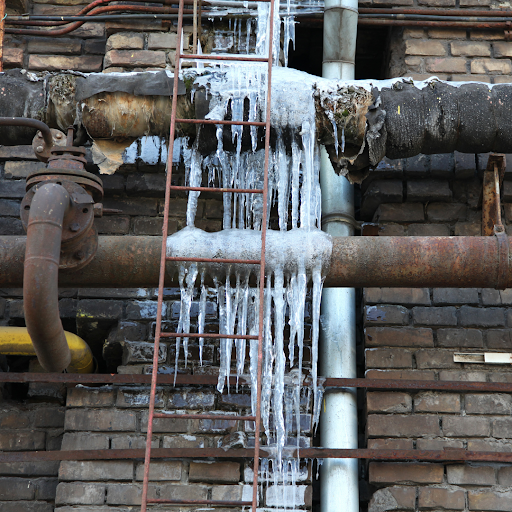How to Safeguard Your Pipes from Cold Weather: Professional Tips
How to Safeguard Your Pipes from Cold Weather: Professional Tips
Blog Article
Are you trying to find information concerning How To Avoid Freezing Pipes?

Cold weather can damage your pipes, specifically by freezing pipelines. Here's exactly how to avoid it from occurring and what to do if it does.
Intro
As temperature levels decrease, the threat of icy pipelines rises, possibly leading to costly repair services and water damage. Comprehending how to stop frozen pipes is essential for home owners in cool climates.
Avoidance Tips
Insulating susceptible pipelines
Wrap pipelines in insulation sleeves or utilize warm tape to secure them from freezing temperatures. Concentrate on pipelines in unheated or outside locations of the home.
Home heating strategies
Maintain interior rooms appropriately heated up, specifically areas with pipes. Open closet doors to allow warm air to circulate around pipelines under sinks.
Just how to determine icy pipelines
Search for reduced water circulation from faucets, unusual smells or sounds from pipelines, and visible frost on subjected pipelines.
Long-Term Solutions
Architectural changes
Consider rerouting pipes away from exterior wall surfaces or unheated locations. Include added insulation to attic rooms, basements, and crawl spaces.
Upgrading insulation
Invest in top notch insulation for pipes, attic rooms, and wall surfaces. Appropriate insulation aids preserve constant temperatures and decreases the risk of frozen pipelines.
Securing Outside Plumbing
Yard pipes and outside faucets
Separate and drain pipes garden tubes prior to winter season. Install frost-proof faucets or cover outside taps with insulated caps.
Comprehending Frozen Pipelines
What causes pipes to ice up?
Pipelines freeze when revealed to temperatures below 32 ° F (0 ° C) for prolonged periods. As water inside the pipelines freezes, it broadens, taxing the pipeline walls and possibly causing them to burst.
Threats and damages
Frozen pipelines can cause water system disruptions, residential property damages, and costly fixings. Burst pipes can flood homes and create comprehensive structural damages.
Indicators of Frozen Pipes
Determining icy pipelines early can stop them from breaking.
What to Do If Your Pipelines Freeze
Immediate activities to take
If you presume icy pipes, keep faucets available to soothe stress as the ice thaws. Make use of a hairdryer or towels soaked in warm water to thaw pipelines slowly.
Conclusion
Protecting against icy pipes requires aggressive procedures and quick reactions. By understanding the causes, indicators, and preventive measures, home owners can protect their pipes throughout cold weather.
6 Proven Ways to Prevent Frozen Pipes and Protect Your Home
Disconnect and Drain Garden Hoses
Before winter arrives, start by disconnecting your garden hoses and draining any remaining water. Close the shut-off valves that supply outdoor hose bibs and leave the outdoor faucet open to allow any residual water to drain. For extra protection, consider using faucet covers throughout the colder months. It’s also important to drain water from any sprinkler supply lines following the manufacturer’s directions.
Insulate Exposed Pipes
Insulating your pipes is an effective way to prevent freezing. Pipe insulation is readily available at home improvement stores and is relatively inexpensive. Pay close attention to pipes in unheated areas such as the attic, basement, crawl spaces, or garage. Apply foam insulation generously to create a buffer against the cold. You can also wrap your pipes in heat tape or thermostat-controlled heat cables for added warmth.
Seal Air Leaks
Inspect your home for any cracks or openings that could let in cold air. Seal any holes around the piping in interior or exterior walls, as well as the sill plates where your home rests on its foundation. Additionally, make sure to keep your garage door closed unless you’re entering or exiting. Leaving it open creates a significant air leak that can lead to frozen pipes.
Allow Warm Air Circulation
During cold snaps, it’s essential to allow warm air to circulate evenly throughout your home. Leave interior doors ajar to promote better airflow. Open kitchen and bathroom cabinets to help distribute heat consistently around the rooms. If you have small children or pets, be sure to remove any household chemicals or potentially harmful cleaners from open cabinets for safety.
Let Faucets Drip
A small trickle of water can make a big difference in preventing ice formation inside your pipes. When temperatures drop significantly, start a drip of water from all faucets served by exposed pipes. This continuous flow helps prevent the water from freezing. Additionally, running a few faucets slightly can relieve pressure inside the pipes, reducing the chances of a rupture if the water inside does freeze.
https://choateshvac.com/6-proven-ways-to-prevent-frozen-pipes-and-protect-your-home/

Do you enjoy reading about Preventing and dealing with frozen pipes? Create feedback further down. We will be delighted to find out your opinions about this blog post. Hoping to see you back again soon. I beg you take the opportunity to distribute this write-up if you appreciated it. I praise you for your time. Return soon.
Call Today Report this page